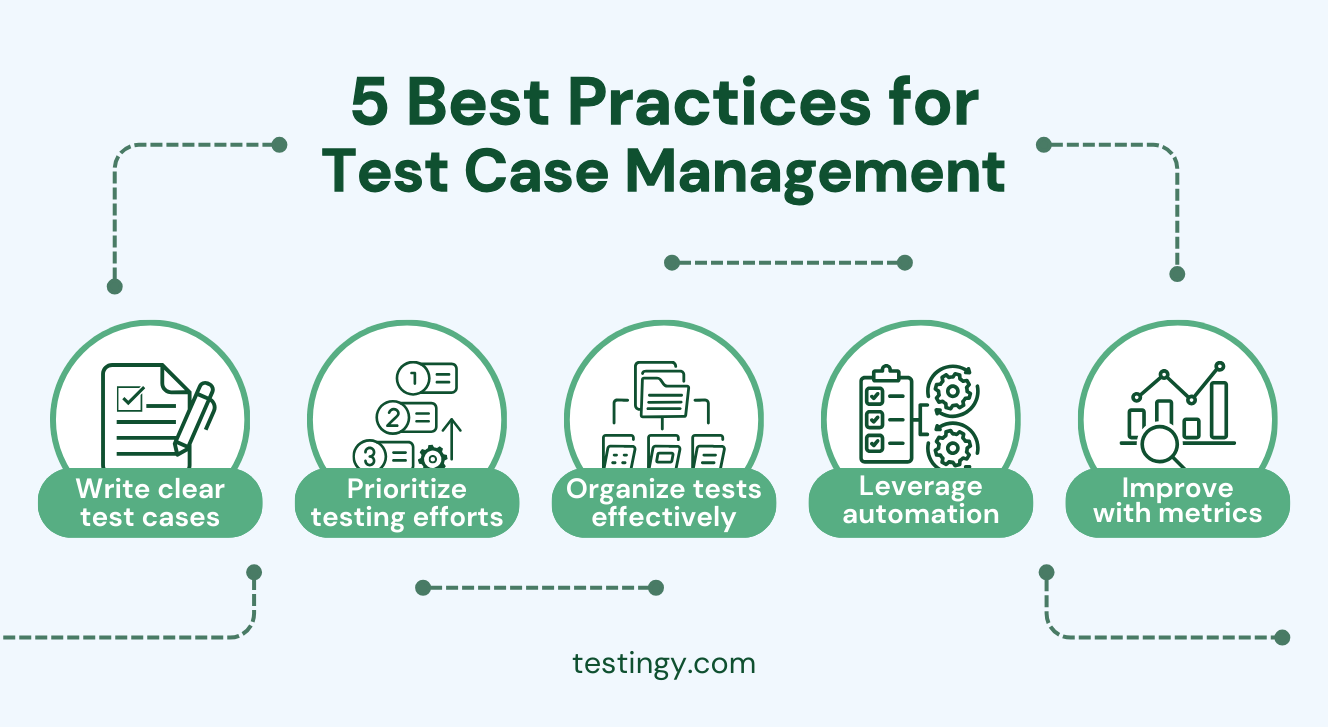Ever wonder why some software launches flawlessly while others crash and burn? Picture a team releasing an update, only to face user backlash over glitches—or a smooth rollout earning rave reviews.
The secret? Test case management.
In agile and DevOps driving rapid development, knowing the answer to “What is test case management?” can make or break your ability to meet sky-high user expectations. Not only that, it is the unsung hero ensuring software doesn’t just work but excels.
This article dives into what test case management is, its importance, benefits, and best practices to implement it. Whether you’re a developer, QA pro, or just curious, let’s dive into the world of testing done right.
What is test case management?
Test case management is the systematic process of creating, organizing, executing, and tracking test cases to validate that software meets its intended requirements. It holds quality assurance (QA) together, ensuring every button, feature, and backend process performs as promised.
Moreover, it is also about proving the software is ready for the real world from mobile apps to enterprise systems.
A key part of this process is designing test cases, where detailed test cases are crafted to cover various scenarios—think typical use, edge cases, and potential failures. It includes:
- Write detailed test cases covering different test scenarios.
- Include test steps, expected results, preconditions, and postconditions.
- Review test cases to ensure completeness and correctness.
Besides, test case management is not a one-off task. It’s a full lifecycle:
- Planning and Designing: Defining what needs testing based on project goals or user stories.
- Structuring and Storing: Grouping test cases logically (e.g., by feature or priority) in a central hub.
- Running and Logging: Executing tests, manually or via scripts, and recording pass/fail results, often with notes on defects.
It is a continuous loop: write tests, run them, refine them, repeat. This keeps quality consistent as software evolves.
The importance of test case management in software testing
Test case management plays a pivotal role in software development, ensuring quality, reducing risks, and fostering collaboration. It also acts as a gatekeeper, verifying that software meets both functional requirements—like a button performing its task—and non-functional ones, such as loading quickly under stress. Thus, it prevents subpar products from reaching users.

Moreover, catching bugs early reduces risks, saving teams from expensive fixes or reputational hits after launch—an hour of early debugging can avoid millions in losses later. It also provides traceability, linking each test to a specific requirement. As a result, teams can confidently confirm that every feature has been validated, offering a clear audit trail for stakeholders.
For modern, often distributed teams, it centralizes testing efforts, enabling testers, developers, and managers across time zones to stay aligned and accountable, with shared access to test results and progress.
Benefits of test case management
1. Comprehensive test coverage
Good test case management leaves no stone unturned. It tests the core features (e.g., user login), edge cases (e.g., entering a 100-character password), and user scenarios (e.g., a dropped connection mid-checkout). This thoroughness prevents nasty surprises post-launch.
2. Increased efficiency
Why reinvent the wheel? Reusable test cases save time. After a bug fix, pull up the same suite for regression testing—verifying old features still work. A study by Capgemini found teams with structured test management cut testing time by up to 30%.
Efficiency isn’t just speed; it’s smart work.
3. Faster time-to-market
In a race to release, testing can’t be the bottleneck. Organized test cases let teams execute quickly and confidently, shaving days—or weeks—off schedules. Pair this with automation, and you’ve got a turbocharged path to market without skimping on quality.
4. Enhanced team collaboration
Centralized test repositories bridge gaps. A developer can see why a test failed, a tester can log defects directly, and a product manager can check progress—all in one place. Some testing tools can even notify teams when tests pass or fail, keeping remote workflows humming.
5. Data-driven insights
Test case management generates goldmines of data: pass/fail ratios, defect densities, and testing coverage stats. If 40% of checkout tests fail, it is a red flag to prioritize.
As a result, these metrics guide decisions—delay the release or ship with confidence? Numbers don’t lie.
6. Adaptability across methodologies
Last but not least, it is versatile. In waterfall, test cases align with upfront specs. In agile, they evolve per sprint. Meanwhile, in DevOps, they integrate into CI/CD pipelines, running automatically with every commit.
Whatever the approach, test case management molds to fit, ensuring quality stays constant.
Best practices for test case management
After understanding what is test case management, now is the time to learn how to implement it in the best ways possible. Here are some of the best practices that you can use to make it more effective.

1. Write clear and focused test cases
Ambiguity kills. A test case like “Check the app” is useless; it is too vague. Instead, you can aim for something like “Verify error message appears when the password is under 6 characters.”
Specific, testable, done. Clarity cuts confusion and boosts execution.
2. Prioritize testing efforts
Not all tests are equal. Focus on high-risk zones—think payment systems or security features—over low-impact ones like button colors. Risk-based testing, a popular QA strategy, ranks features by impact and likelihood of failure. Test smart, not just hard.
3. Organize your tests effectively
Chaos wastes time. Group test cases logically: by feature (e.g., “Login Tests”), module (e.g., “Backend APIs”), or priority (e.g., “Critical”). Tools like Zephyr let you tag and filter, so finding “all payment tests” takes seconds, not hours.
4. Leverage automation strategically
Automation shines for repetition—running 100 login tests across browsers in minutes. But don’t overdo it. Exploratory testing, where humans poke at the software creatively, catches quirks scripts miss. For example, a 70/30 split (automated/manual) can create optimal results.
5. Use metrics to improve
Data isn’t just for show. You can use it to track pass rates, defect trends, or time-to-test. If database tests fail 50% of the time, INVESTIGATE!
Metrics spotlight weaknesses, letting you refine processes. It’s testing as a science, not a guess.
Common challenges in test case management
1. Rapidly changing requirements
In dynamic environments (e.g., agile projects), requirements can shift quickly, causing test cases to become obsolete. Therefore, staying flexible and revisiting test designs after each iteration is essential for maintaining relevance.
2. Overlap or redundancy
Multiple teams may test the same functionality on large projects. Establishing clear ownership and collaboration between teams helps minimize duplicate test cases and wasted effort.
3. Limited resources
Time, people, and budgets are always finite. That’s why an effective test case management strategy prioritizes high-impact areas, ensuring critical functionalities are tested first.
Conclusion
So, what is test case management? It is more than a process—it’s the heartbeat of software excellence. It organizes chaos, catches bugs before they bite, and powers teams to deliver reliable products.
Beyond QA, it builds trust from users who rely on your app and the trust from stakeholders betting on your success. In a world where software runs everything—phones, cars, even rockets—it’s a non-negotiable edge.
Ready to improve your testing? Assess your setup, explore tools like Testingy, and start small if necessary. In an era of rapid releases and ruthless competition, test case management isn’t optional—it’s essential.







